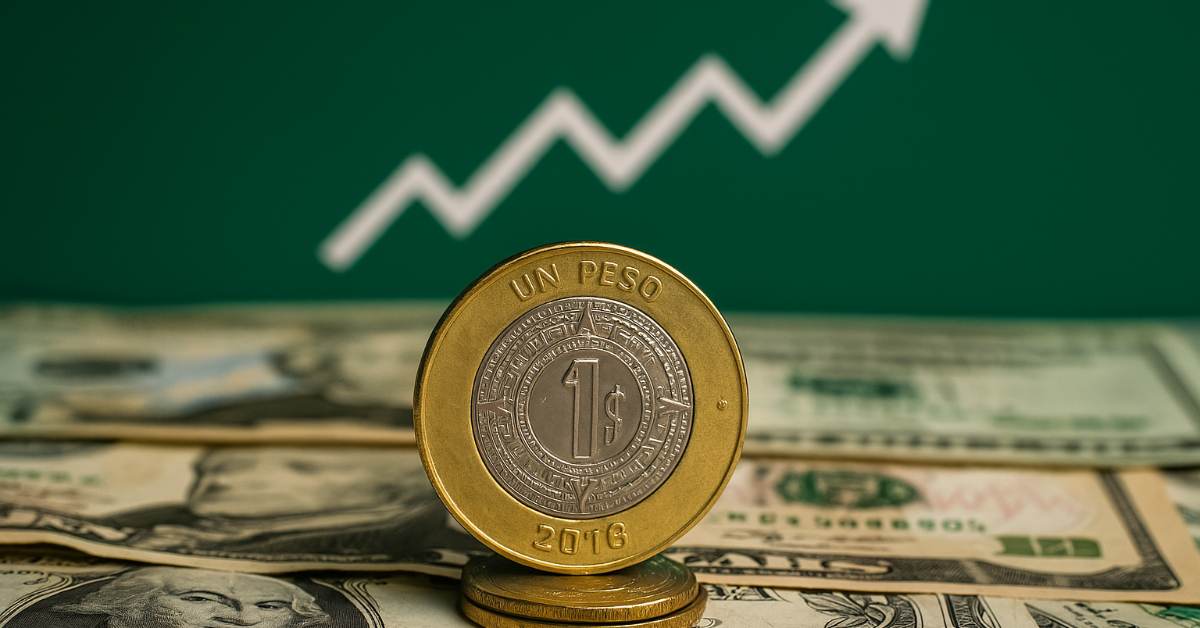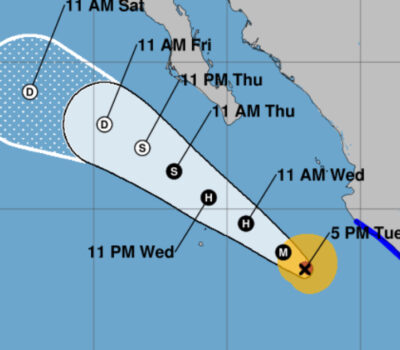Peso strengthens on nonfarm payrolls as U.S. job gains drive a 0.56% rise, closing at 18.6629 per dollar, even as Mexico’s fixed investment falls for an eighth month.
The Mexican peso advanced against the U.S. dollar on Thursday after data showed stronger-than-expected job growth in the United States. Traders reacted to a nonfarm payrolls report that pointed to continued strength in the world’s largest economy, driving the peso up 0.56 percent by day’s end.
According to the Bank of Mexico (Banxico), the peso closed trading at 18.6629 per dollar, a gain of 0.1052 pesos from Wednesday’s close of 18.7681 per dollar. During the session, the dollar traded between a high of 18.8410 and a low of 18.6369, marking the peso’s best level in over ten months.
The Intercontinental Exchange’s Dollar Index (DXY), which tracks the U.S. currency against a basket of six major currencies, rose 0.35 percent to 97.12 points. Despite the dollar’s modest rebound, the peso’s outperformance reflected growing confidence in the U.S. labor market.
U.S. nonfarm payrolls jumped by 147,000 jobs in June, surpassing economists’ forecasts. The unemployment rate also fell unexpectedly, underlining a resilient labor market as the Federal Reserve heads into its July policy meeting. Consensus among analysts suggests the Fed will hold rates steady given the absence of immediate inflationary pressures.
Eduardo Ramos, an analyst at VT Markets, noted, “The data comes just before the Federal Reserve’s July meeting, and everything indicates they will maintain rates. The reaction was in that direction, reflecting the lack of clear signs of the need for immediate stimulus.” Mauricio Guzmán, chief strategist at SURA Investments, added, “The employment data released this morning reinforces our constructive view of the U.S. economy, as we continue to anticipate a non-recession scenario over the next 12 months.”
Part of the peso’s rally also stemmed from U.S. political developments. In a surprise move, the U.S. Congress approved a tax and spending bill strongly associated with former President Donald Trump. The measure drew heavy criticism over its potential impact on the deficit, but markets interpreted it as a sign of bipartisan willingness to support the U.S. economy.
Before the U.S. payrolls data arrived, the peso faced pressure following a report from Mexico’s National Institute of Statistics and Geography (INEGI). It showed gross fixed investment in Mexico fell 12.5 percent year-over-year in April, marking the eighth straight month of annual declines. Slowing business spending has raised concerns about the pace of domestic growth, leaving the peso vulnerable to global risk sentiment.
Despite those headwinds, Thursday’s session highlighted the peso’s sensitivity to U.S. economic signals. At its low of 18.6369 per dollar, the peso reached levels not seen since September of last year, underlining the currency’s capacity for rapid gains when international factors align in its favor.
Looking ahead, market participants will monitor the Federal Reserve’s policy statement and any signals on rate adjustments. Back home, Mexico’s economic calendar remains light, but investors will keep a close eye on upcoming INEGI releases for clues on domestic demand and investment trends.
Peso strengthens on nonfarm payrolls as U.S. job gains drive a 0.56% rise, closing at 18.6629 per dollar, even . . .












